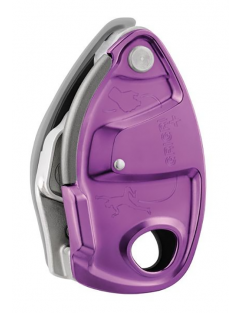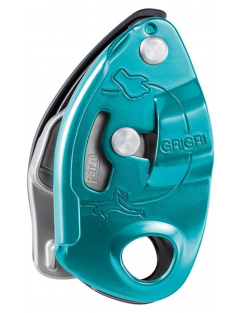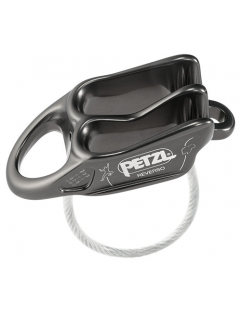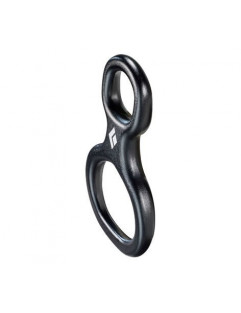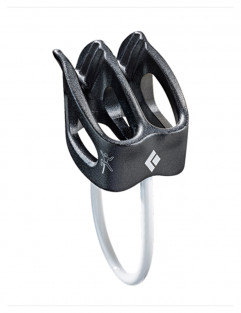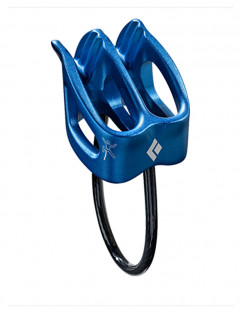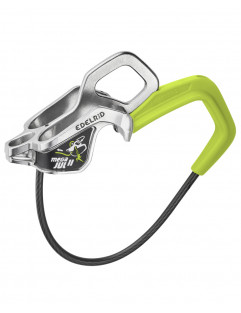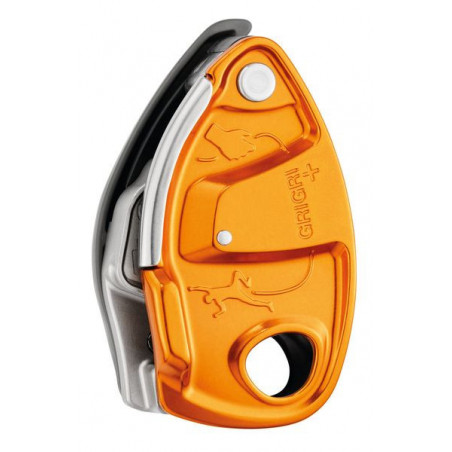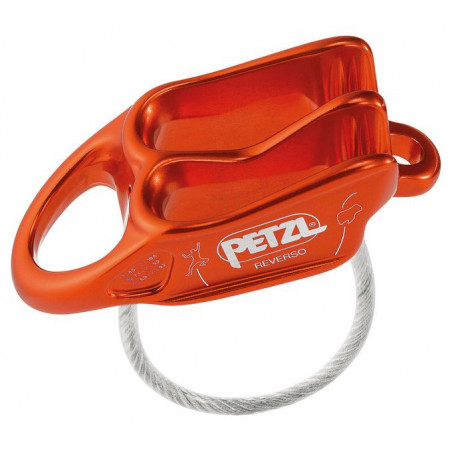Active filters
assisted-belay-devices
Petzl - Grigri + - Belay Deviceassisted-belay-devices
Petzl - Grigri - Belay Devicenon-assisted-belay-devices
Petzl - Reverso - Belay Devicenon-assisted-belay-devices
Black Diamond - Super 8 - Belay Devicenon-assisted-belay-devices
Black Diamond - ATC-XP - Black - Belay Devicenon-assisted-belay-devices
Black Diamond - ATC-XP - Blue - Belay Deviceassisted-belay-devices
Edelrid - Mega Jul - Belay Deviceassisted-belay-devices
Petzl - Neox - Belay Device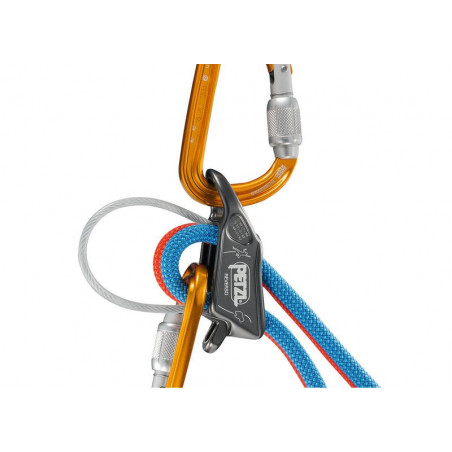
Belay Devices
How to choose the right belay device for you?
There are several different belay devices out there. We divided them up in 3 main categories, tubular, figure eight and assisted breaking.
These systems all work in a similar way, it is thanks to the friction between the device and the climbing rope that they are able to brake a fall.
Tubular belay devices
These are very versatile devices and hence are suited for any kind of climbing be it trad, sport or indoor. Operating them is quiet simple, you just fold the rope, push it through and use a carabiner to either clip it to the belayer or the anchor. The friction caused between the bend rope and belay device helps slow down or stop the rope. Furthermore, when it is time to rappel, most tubular devices allow for a second strand of rope.
| pro | con |
| - light weight | - some people (lightweight) find rappelling really slow |
| - compatible with most ropes | |
| - ropes don't twist or kink | |
| - rappelling on two strands |
Figure 8 belay devices
This device is best suited for search and rescue, caving and rappelling. Shaped like an 8, they have one larger and one smaller opening. When rappelling, you feed a bight of rope through the large hole and loop it around the outside of the small hole till it rests on the "neck" of the figure 8. The small hole is clipped to your belay loop on your harness. For belaying, different ways to rig the rope through the device are recommended. Read the instructions included with your figure 8 to learn the proper way to set it up.
| pro | con |
| - great for rappelling | - requires more force and attention from the belayer than other devices |
| - eliminates heat caused from friction | - twist the rope which can cause difficulty in the handling. |
| - compatible with any rope diameter |
Assisted breaking belay devices
These, like the name suggests, are designed to lock down on the rope in case a sudden force is applied to them, thereby helping the belayer catch the fall. These devices are also sometimes called self-braking, self-locking, auto-blocking or auto-locking devices and there are differences to be made.
For example, some devices will provide assisted breaking whether you’re belaying a lead climber, top-rope climber or a follower on a multipitch climb. Many of them use an internal camming mechanism to lock down on the rope when a climber falls. Compared to other devices they tend to be heavier and usually only work with a single line, which is why they are mainly used for sport climbing, either outdoors or indoors.
Other devices that will only assist braking for belaying one or two followers are usually tubular belay devices with an additional metal loop on the inside. This one is needed to attach the device to the anchor and set it up in assisted-braking mode. These devices have the same advantages/disadvantages than a normal tubular device while providing the possibility of belaying 1 or 2 followers in assisted braking mode. As with any belay device, assisted-braking devices require that you always use proper belay technique and have your brake hand ready to lock off the rope
| pro | con |
| - help stop the climbers fall | - Don’t work with all diameters of rope |
| - rope feed is smooth | - heavy |
| - easy to lower the climber in a controlled manner | - some only allow rappelling on a single strand |
| - not recommended for use with wet or icy ropes | |
The choices are endless and difficult today so contact our Customer Service or send us a mail to help you choose the right product for your needs.
Shop online.........more time to climb.
Casper's Supports Your Summit
Subcategories
-
Assisted Belay Devices
<h1><span style="text-decoration:underline;">How to choose the right belay device for you?</span></h1> <p style="font-size:11px;font-weight:400;">There are several different belay devices out there. We divided them up in 3 main categories, <em>tubular</em>, <em>figure eight </em>and <em>assisted braking. </em></p> <p style="font-size:11px;font-weight:400;">These systems all work in a similar way, it is thanks to the friction between the device and the climbing rope that they are able to brake a fall.</p> <h2><span style="text-decoration:underline;">Assisted braking belay devices</span></h2> <p>These, like the name suggests, are designed to lock down on the rope in case a sudden force is applied to them, thereby helping the belayer catch the fall. These devices are also sometimes called self-braking, self-locking, auto-blocking or auto-locking devices and there are differences to be made.</p> <p>For example, some devices will provide assisted braking whether you’re belaying a lead climber, top-rope climber or a follower on a multipitch climb. Many of them<b> </b>use an internal camming mechanism to lock down on the rope when a climber falls. Compared to other devices they tend to be heavier and usually only work with a single line, which is why they are mainly used for sport climbing, either outdoors or indoors.</p> <p>Other devices that will only assist braking for belaying one or two followers are usually tubular belay devices with an additional metal loop on the inside. This one is needed to attach the device to the anchor and set it up in assisted-braking mode. These devices have the same advantages/disadvantages than a normal tubular device while providing the possibility of belaying 1 or 2 followers in assisted braking mode. As with any belay device, assisted-braking devices require that you always use proper belay technique and have your brake hand ready to lock off the rope</p> <table width="293" style="height:264px;"> <tbody> <tr> <td style="text-align:center;"><strong>pro</strong></td> <td style="text-align:center;"><strong>con</strong></td> </tr> <tr> <td>- help stop the climbers fall</td> <td>- Don’t work with all diameters of rope</td> </tr> <tr> <td>- rope feed is smooth</td> <td>- heavy</td> </tr> <tr> <td>- easy to lower the climber in a controlled manner</td> <td>- some only allow rappelling on a single strand</td> </tr> <tr> <td></td> <td>- not recommended for use with wet or icy ropes</td> </tr> <tr> <td></td> <td></td> </tr> </tbody> </table> <p></p> <p>Some examples of assisted belay devices would be:</p> <p><img src="https://www.caspersclimbingshop.com/img/cms/images-gearjunkie%20(1).png" alt="" width="350" height="263" /> Wild Country's "Revo"</p> <p><img src="https://www.caspersclimbingshop.com/img/cms/images-gearjunkie.png" alt="" width="350" height="234" /> Mammut's "Smart 2.0"</p> <p><img src="https://www.caspersclimbingshop.com/img/cms/grigri.png" alt="" width="350" height="234" /> Petzl's "GriGri +"</p> <p></p> <p>The choices are endless and difficult today so contact our <a href="/contact-us">Customer Service</a> or <a href="mailto:info@caspersclimbingshop.com">send us a mail</a> to help you choose the right product for your needs. </p> <p></p> <p>Shop online.........more time to climb.</p> <p></p> <p>Casper's Supports Your Summit</p> -
Non-Assisted Belay...
<h1><span style="text-decoration:underline;">How to choose the right belay device for you?</span></h1> <p>There are several different belay devices out there. We divided them up in 3 main categories, <em>tubular</em>, <em>figure eight </em>and <em>assisted braking. </em></p> <p>These systems all work in a similar way, it is thanks to the friction between the device and the climbing rope that they are able to brake a fall.</p> <p><strong>Non Assisted Belay Devices</strong></p> <p>A general rule of non assisted belay devices is that on these, the belayer absolutely needs to keep their hand on the brake end of the rope and keep this hand below the braking plane of the device at all time! If the hand is above the braking plane and the climber takes a fall, the rope will just slide through the climber's hand and most likely leave him with a serious rope burn. With the right safety training however, non-assisted braking devices can offer a super smooth belay experience.</p> <p>The choices are endless and difficult today so contact our <a href="/contact-us">Customer Service</a> or <a href="mailto:info@caspersclimbingshop.com">send us a mail</a> to help you choose the right product for your needs. </p> <p></p> <p>Shop online.........more time to climb.</p> <p></p> <p>Casper's Supports Your Summit</p> <p></p>








